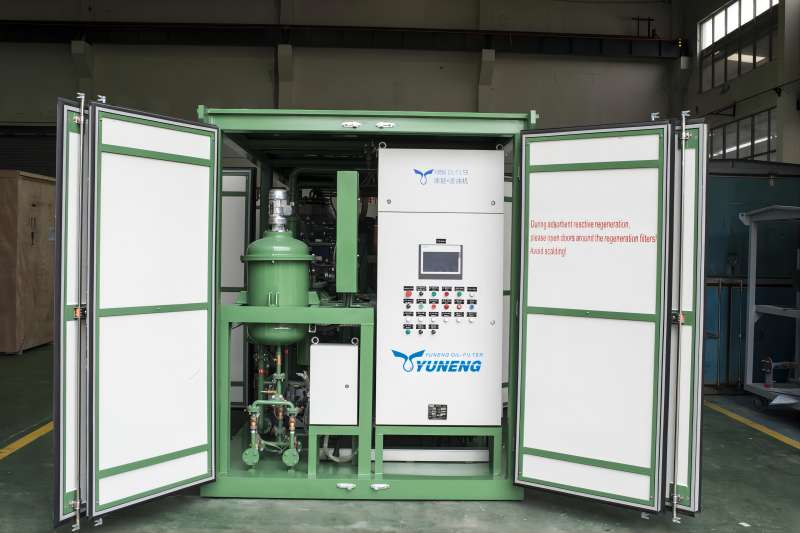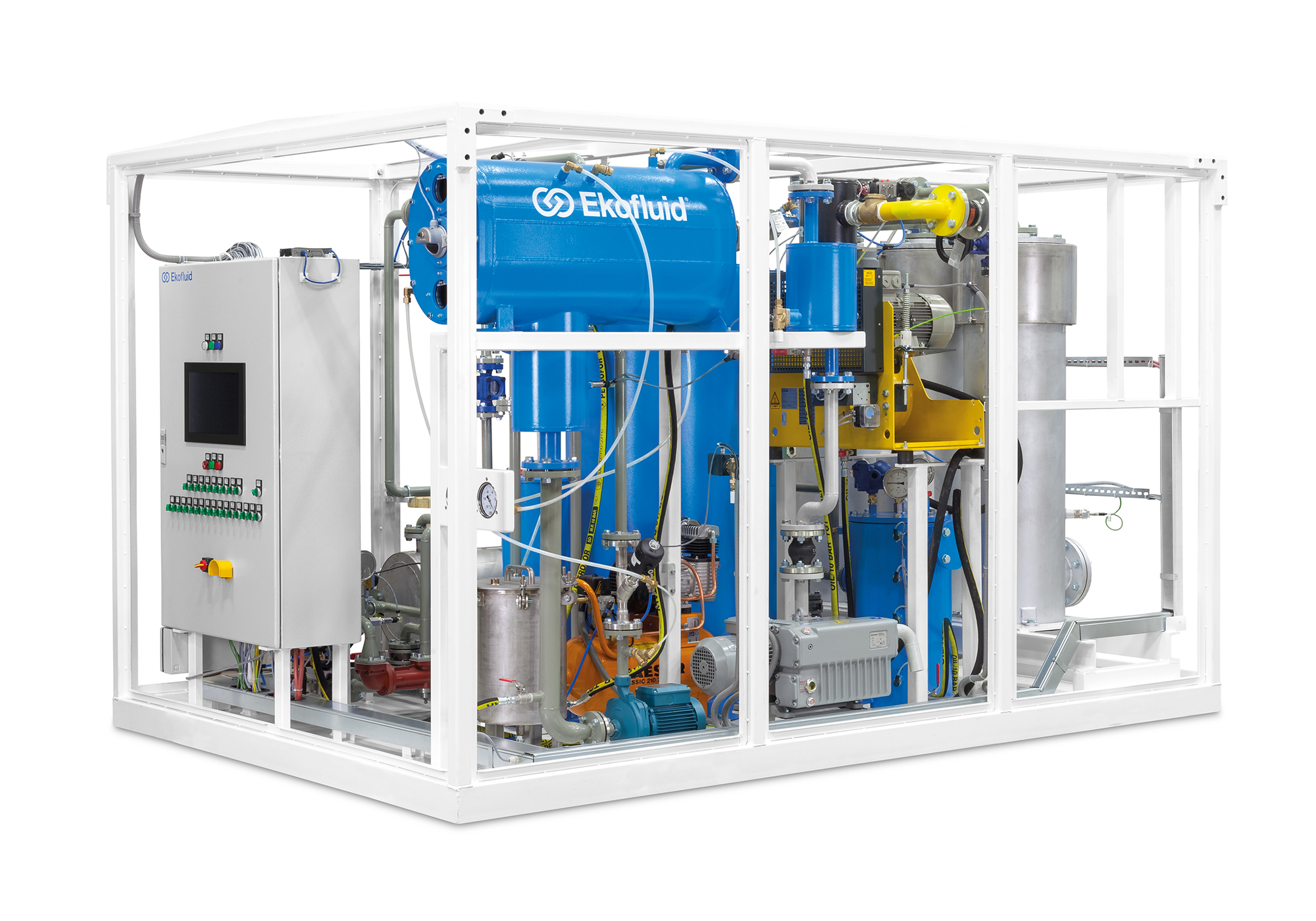Efficiency Boosts With the Transformer Oil Regeneration Process
Efficiency Boosts With the Transformer Oil Regeneration Process
Blog Article
Exactly How Regenerated Transformer Oil Extends Transformer Life-span
The function of transformer oil is important in making certain the reliability and longevity of transformers, serving as both an insulator and coolant. Regrowed transformer oil uses an engaging remedy to enhance these functions by efficiently eliminating dangerous impurities that jeopardize efficiency.
Value of Transformer Oil
Transformer oil plays a crucial role in the reliable procedure of electrical transformers. It mostly acts as a protecting medium, stopping electrical discharges and making sure that components operate securely under high voltage problems. The oil's dielectric properties are fundamental to keeping the honesty of the transformer, as they decrease the threat of failings that might result in catastrophic cases or pricey downtimes.
Along with its protecting capabilities, transformer oil also operates as a coolant. As transformers run, they produce warm that must be dissipated to prevent getting too hot and subsequent damage. The oil flows within the transformer, taking in and transferring heat far from vital components, therefore preserving optimal operating temperature levels.
Moreover, transformer oil functions as a barrier against wetness and impurities, which can compromise the performance and longevity of the transformer. Its chemical properties assist in reducing the effects of acids and other results that may form with time, contributing to the total health of the electrical system.
Benefits of Regenerated Oil

Additionally, regenerated transformer oil has a lower degree of impurities, including fragments and contaminants that can deteriorate efficiency. This pureness not only enhances the oil's thermal conductivity however additionally extends the operational life expectancy of transformers by decreasing overheating risks. The enhanced thermal security of restored oil ensures consistent performance even under high operating temperature levels, which is essential for maintaining transformer effectiveness.
An additional advantage is its environmental impact. Regenerated oil promotes sustainability by decreasing waste and the requirement for new oil manufacturing, therefore lowering the carbon footprint related to transformer maintenance. Regenerated Transformer Oil. The long life of restored oil translates to reduced upkeep expenses over time, as fewer oil changes and less constant tools downtime are needed.
Process of Oil Regeneration
The regeneration of transformer oil involves an organized procedure created to bring back the oil's initial buildings and improve its performance. This process generally begins with the elimination of the made use of oil from the transformer, which is after that subjected to various filtration methods.
The very first step in Homepage the regeneration process is the purification, where strong pollutants such as sludge, dust, and metal bits are eliminated. This is often adhered to by vacuum purification, which assists to remove dampness and unstable compounds, therefore enhancing the oil's dielectric toughness.

Impact on Transformer Efficiency
Restoring the residential properties of regenerated transformer oil considerably affects the overall efficiency of transformers. Enhanced dielectric stamina is one of one of the most important benefits, as it allows for better insulation and reduces the chance of electrical malfunction. This renovation results in a much more secure their website operation under high voltage problems, inevitably resulting in boosted performance.
Additionally, the removal of impurities and deterioration items throughout the regeneration process lessens the threat of getting too hot. Cleaner oil helps with much better warmth dissipation, which is essential for preserving ideal operating temperature levels. As an effect, the thermal performance of the transformer is improved, permitting greater tons without Check Out Your URL endangering integrity.
Moreover, the chemical stability of regenerated oil guarantees extended functional life. It stands up to oxidation and destruction, lowering the regularity of upkeep interventions and oil replacement. This stability not only adds to enhanced performance but also aligns with sustainability goals by lessening waste.
Future of Transformer Upkeep
As innovations in modern technology proceed to improve the landscape of electric design, the future of transformer maintenance is poised for significant change. The integration of smart technologies, such as IoT sensing units and anticipating analytics, makes it possible for real-time tracking of transformer health and wellness, improving the ability to preemptively address issues prior to they intensify into major failings. This positive method not only optimizes functional efficiency but additionally expands the lifespan of transformers.
In addition, the application of fabricated intelligence (AI) in information analysis permits even more precise mistake discovery and diagnosis. By leveraging artificial intelligence algorithms, upkeep teams can recognize patterns in operational information that human experts may forget, causing even more educated decision-making.
In addition, the adoption of environmentally friendly methods, consisting of the use of regenerated transformer oil, is readied to redefine upkeep procedures. This lasting strategy not just reduces ecological influence but likewise boosts the overall health of the transformer.
Last but not least, the shift in the direction of automation in upkeep processes is expected to enhance operations, lower downtime, and lower expenses. As these technologies remain to develop, the future of transformer upkeep will certainly end up being much more effective, reliable, and sustainable, guaranteeing the stability of essential electric infrastructure.
Conclusion
The use of regenerated transformer oil dramatically boosts the operational durability of transformers. By successfully bring back dielectric toughness and thermal security, this oil plays a critical role in mitigating risks connected with getting too hot and oxidation. The regeneration process not only removes hazardous pollutants however additionally decreases maintenance frequency and oil replacement prices. Inevitably, the fostering of restored oil stands for an essential improvement in transformer maintenance, guaranteeing optimal performance and sustainability in the monitoring of electrical framework.
The role of transformer oil is essential in making certain the dependability and long life of transformers, serving as both an insulator and coolant.Transformer oil plays an important duty in the effective operation of electric transformers. Regrowed oil advertises sustainability by minimizing waste and the need for brand-new oil production, thereby reducing the carbon footprint linked with transformer maintenance.Recovering the residential properties of regenerated transformer oil significantly affects the total efficiency of transformers.The use of regenerated transformer oil considerably boosts the functional durability of transformers.
Report this page